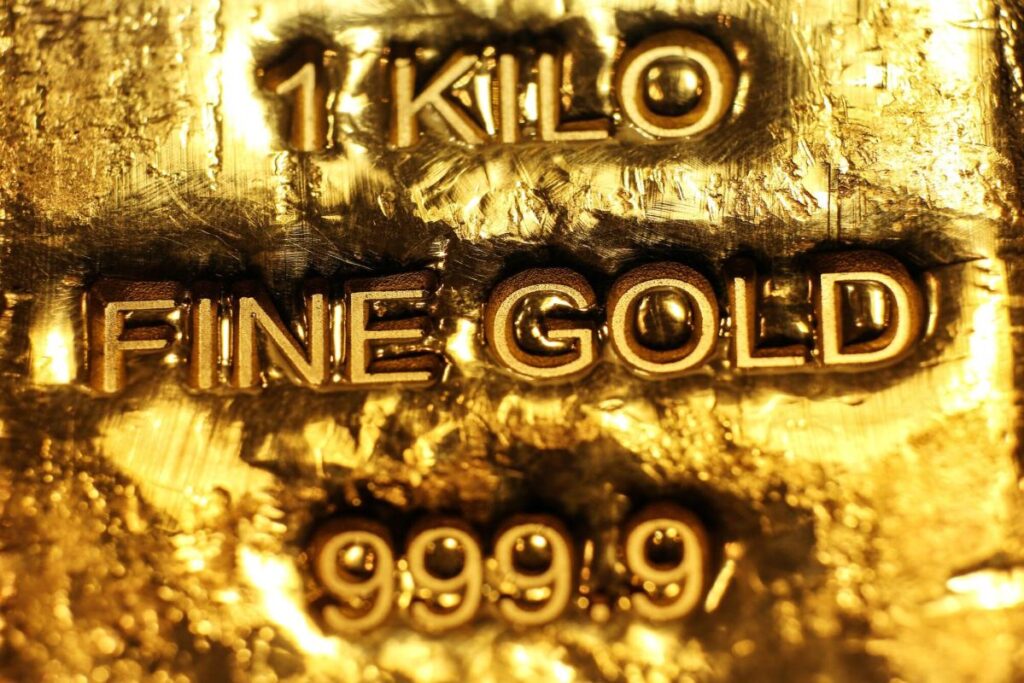Gold prices hovered near record highs as recent US economic data bolstered expectations of continued interest rate cuts by the Federal Reserve. Recent stats from the Commerce Department showed that US retail sales rose more than anticipated in September, while claims for unemployment benefits fell unexpectedly, particularly in areas impacted by Hurricane Helene. The positive economic indicators sparked an increase in Treasury yields and the US dollar, resulting in gold, which had previously reached $2,687.67 an ounce, losing some of its early gains. The euro depreciated following a rate cut implemented by the European Central Bank, which contributed to a stronger greenback and added pressure to gold prices.
The mixed economic readings have reinforced the sentiment among gold traders that the Federal Reserve is likely to pursue further rate cuts, with some expecting at least another quarter-point reduction before the year concludes. According to Bob Haberkorn, a senior market strategist at RJO Futures, the favorable economic data suggests a probable shift towards lower rates, which traditionally boosts gold prices as the metal is non-interest bearing. Investors appear confident that softening monetary policy will support gold as they prepare for the upcoming US elections on November 5, where the uncertain economic policies of candidates Donald Trump and Kamala Harris could influence market dynamics.
Gold’s year-to-date performance has been impressive, rising over 30% and making it one of the strongest commodities in the market, largely fueled by optimistic sentiments regarding reduced interest rates. The recent rally in gold prices can also be attributed to heightened geopolitical tensions, particularly the conflict in the Middle East. Israel’s announcement of a military operation that allegedly targeted key Hamas figures played into existing unrest in the region, creating further demand for safe-haven assets like gold. Historically, gold performs well in times of geopolitical instability, and the expectation of lower interest rates increases its attractiveness to investors.
Spot gold was recorded at $2,685.52 an ounce in early trading, reflecting a 0.5% rise, while the Bloomberg Dollar Spot Index experienced a marginal increase of 0.1%. In addition to gold’s advancements, other precious metals such as silver, palladium, and platinum saw slight increases as well. The collective positive movement in these markets hints at a broader trend, where investors may be reallocating resources into non-yielding assets amid shifting economic conditions and uncertainties surrounding monetary policies.
The ongoing support from central bank purchases also contributes to gold’s upward trajectory, as many central banks around the world continue to expand their reserves. This widespread accumulation has bolstered gold prices and underscores its status as a reliable store of value during market fluctuations. With changing dynamics in global trade and economic growth, central banks remain vigilant, adjusting their strategies to safeguard against inflation and currency volatility, further enhancing gold’s appeal.
As investors keep a close watch on upcoming economic indicators and the Fed’s monetary policy decisions, gold is positioned to potentially gain further strength. The intersection of an impending election, low interest rates, and rising international tensions suggests a conducive environment for continued investment in gold. Whether facing a Trump or Harris presidency, the intrinsic qualities of gold make it a favored choice among investors seeking stability in uncertain markets, thereby ensuring its relevance in substantial market movements for the foreseeable future.

